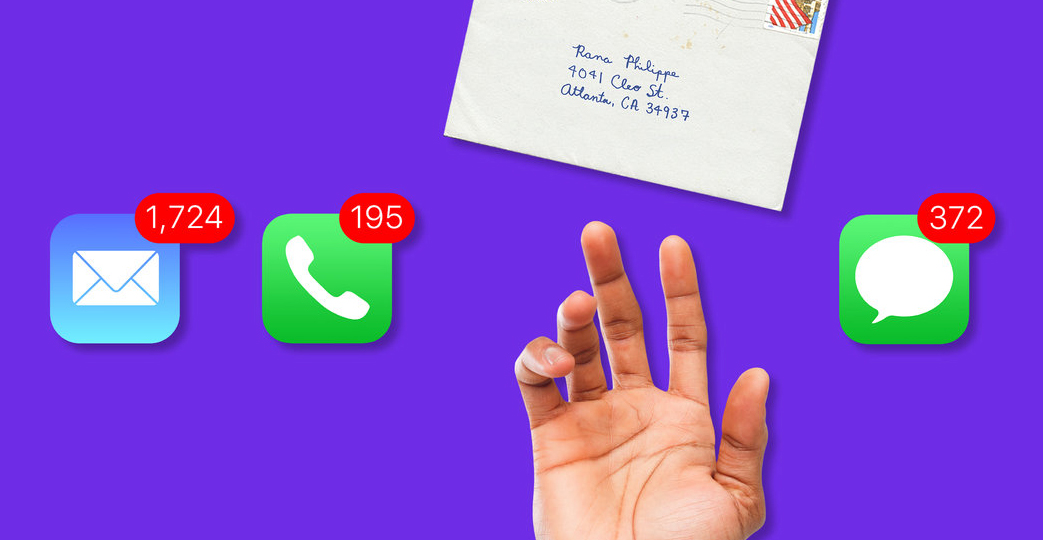What the world needs now? Handwritten cards and letters.
No other written method of communication shows you care as much about connecting personally, than pen, ink, and, when called for, a stamp. It asks for more of us, more time, more creativity, and more commitment. That’s a good thing. Whether we realize it or not. Sadly, it appears that most people don’t realize it, haven’t been taught it, or, have long forgotten it.
By Susan Shain
Oprah Winfrey. Richard Branson. George H.W. Bush. Taylor Swift.
Besides fame and success, what do all of these people have in common?
Something surprisingly unglamorous and gloriously analog: a love of physical cards and letters. Of notes that need a lick and a stamp instead of a click and a swoosh.
Over the past decade, the number of first-class mail items sent through the Postal Service has dropped by more than 50 percent. Not counting holiday cards and invitations, the average American household receives just 10 pieces of personal mail per year. Nearly half of British children, according to one survey, have never sent a handwritten letter.
In an age of torrential email, incessant group texts and lackadaisical Facebook birthday posts, snail mail has become quaint, almost vintage. But that doesn’t mean its days are over. As a recent CityLab story pointed out, we can save snail mail — if we want to.
David Sedaris, the best-selling author and humorist, is known for writing letters to his fans, his boyfriend and everyone he works with on book tours. He will also send a thank-you note if you have him over for dinner.
“I just feel like it’s classy to do it with real mail,” he said. “It’s too easy to do it on email. And it also doesn’t mean as much.” Not to mention, he added, “It’s nice to be thought of as classy.”
Whether it’s to say thank you, hi or I’m sorry — or to send a Q-tip attached to a sheet of paper, as Mr. Sedaris’s pen pal, the late comedian Phyllis Diller, once did — here’s why it’s time to bring snail mail back.
Writing by hand feels good.
When we write by hand, we retain information better and may even boost our creativity. Plus, because we do it so rarely these days, it can be a welcome respite from typing.
“It’s more fun,” said Margaret Shepherd, a professional calligrapher and author of “The Art of the Handwritten Note.” “It is such a delight to see that ink go on that beautiful paper — to pick out a stamp, to slow down and realize you thanked or consoled somebody in the best way possible.”
The warm fuzzies that accompany writing are more than anecdotal. In one study, Steven Toepfer, an associate professor of human development and family studies at Kent State University at Salem, asked participants to compose three “letters of gratitude” over the span of a month.
They could write to anyone, as long as the content was positive. With each letter, the writers experienced higher levels of happiness and life satisfaction, and lower levels of depressive symptoms.
Mr. Toepfer said we all have a base of gratitude inside us, which can lead to positive psychological effects. “But we have to tap into it — and use it — to get its benefits,” he explained. “I think writing letters does that.”
Handwritten notes spread love.
If you want to show you care, snail mail is an effective method. Think about the last time you received a hand-addressed missive — didn’t it make you smile?
Saeideh Heshmati, assistant professor of positive psychology at Claremont Graduate University, recently researched what makes people “feel loved.” She found that “small gestures in everyday life,” like people supporting you without expecting anything back or showing compassion during tough times, were what participants most agreed upon as “loving.”
Since cards require more effort than email, Ms. Heshmati said recipients will likely “feel more loved because you took the time to do that for them.” She added, “It’s the care that comes with it that signals the love.”
Snail mail is, well, slow (and unique).
Whereas emails are something to rush through on the way to Inbox Zero, cards and letters are something to cherish; to set on a desk, to stick to a fridge, to bind into a book for future generations.
In the digital age, we are “assaulted by a barrage of information — much of it having little or no importance,” Florence Isaacs wrote in her book “Just a Note to Say.” “Yet personal words on paper often are saved in a shoe box, becoming a memory to be revisited through the years.”
For proof, look to Letters of Note, a popular site that offers an intimate window into history and the characters who shaped it. While there may someday be an “Emails of Note,” it wouldn’t impart the same romance. After all, the swirl of the letters, the smudges of ink and the pastiche of paper are what brings us into each writer’s world.
You don’t have to be a writer or an artist to send meaningful notes.
Because of snail mail’s novelty, what you say — and what it looks like — often matters less than the act itself.
“My husband sends handwritten notes scratched out with a pencil, and people just sit up and sing,” said Ms. Shepherd, the calligrapher. “They’re so happy to get something in the mail, even if it doesn’t have a lot of production value.”
If you find yourself struggling to find the appropriate words, she recommended keeping it simple and writing as though you are talking to your recipient. If you don’t know who to write, start with the children in your life or reach out to deserving strangers through initiatives like More Love Letters or Operation Gratitude.
When one of Mr. Sedaris’s friends comes out with a new book or play, he sends a card with specific details like: “I loved it on Page 38 when you did this.”
“I just realize how much it means when somebody goes into details,” he said. “I know it makes me feel good, and it’s not that hard. … A little effort is all it takes.”
Getting started is easier than you think.
Mr. Sedaris is right: Although snail mail requires more work than its digital kin, it’s still not hard.
Avoid the agony of scouring last-minute, overpriced $5 cards in the drugstore by purchasing a set of blank cards to keep at home. Craft fairs and farmers’ markets usually have lovely handmade ones, and even the dollar store sells passable sets. If you have a favorite artist or illustrator, they may have an Etsy or Gumroad shop where you can buy their work printed on blank cards.
Then grab a book of stamps and a nice pen and toss it all into a shoe box. Now you’re ready for snail mail — with minimal hassle. (You can even batch cards at the beginning of each month by scanning your calendar for upcoming birthdays and celebrations.)
The next time you’re tempted to send a congratulatory email or a digital birthday message, try a card instead. If you’re looking for an event to kick you off, consider making this holiday season the one where you offer friends a chance to get on a holiday card list — no strings or reciprocation attached (if that’s O.K. with you) — and send a personal note to each loved one who signs up.
“There’s something permanently charming about getting an envelope in the mail,” said Ms. Shepherd. “It’s as if somebody gift wrapped their words for you.”

